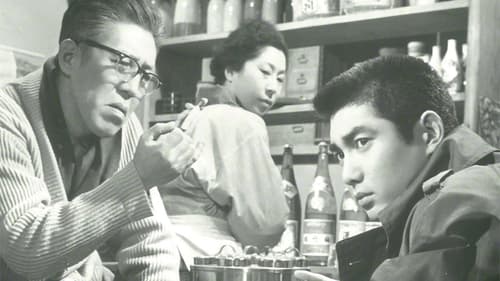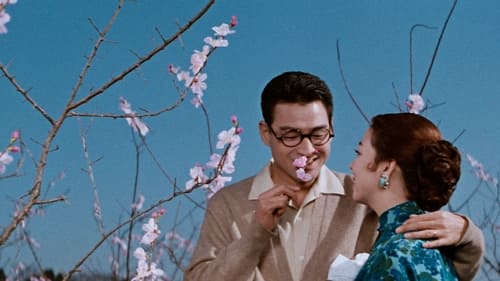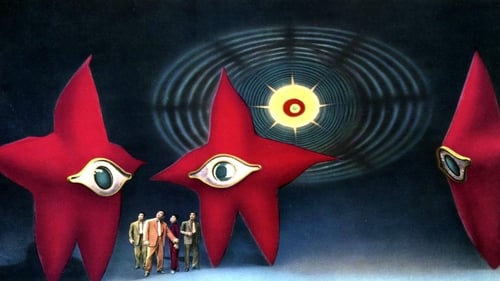Kimio Watanabe
Birth : 1918-01-01, Chiba Prefecture, Japan
Death : 1983-12-31
History
Known more as a cinematographer throughout the 1940s to the 1960s in Japan, Kimio Watanabe (1918–1983) has a decorated career in film. One of his productions, The White Heron, was screened and nominated for the Palme d’Or in the 1959 Cannes Film Festival. Watanabe also lent his skills to Kon Ichikawa – the director of Tokyo Olympiad – in his classic Bridge of Japan.

Director of Photography
A film adaptation of the second play from "The Man Who Turned Into A Stick" by Kōbō Abe himself.

Director of Photography
In the prewar days leading up to the Second Sino-Japanese War of 1937, head flight instructor Lt. Katō Tateo of the Imperial Japanese Army-Air Corps trains new volunteers from the Army's Infantry to become Japan's next generation of fighter pilots at the Tokorozawa Flying School. Flying Kawasaki Ko-4 biplanes, Lt. Katō will train both friend and future foe alike. But as war in China breaks out, Katō now in command of the 5th Rentai will take his untested men flying antiquated planes into aerial combat against the Chinese Air Force who is now headed by Lt. Cho who Katō both earlier befriended and personally trained himself. While Katō's squadron ultimately achieves air superiority over the skies of Manchuria, it comes at a high price in men to which each loss carries a heavy burden that he alone must carry. As the war widens into the Second World War, Captain Katō must battle an ever advancing array of deadlier new enemies flying ever more modern fighter planes.

Director of Photography
The story of a sexy girl with a passion for attracting men and counting the money she entices from them with her body.

Director of Photography
Third film in the long-running series Daiei Studio's Woman Gambler with Kyoko Enami starring where she plays the woman gambler Ogin.

Director of Photography
Two characters on a Noh stage dramatize the rite of love and death of Lieutenant Shinji Takeyama and his wife Reiko.

Screenplay
A fascinating glimpse of the Tokyo Paralympics Games of 1964 and the pioneering athletes who participated in them.

Director of Photography
A fascinating glimpse of the Tokyo Paralympics Games of 1964 and the pioneering athletes who participated in them.

Director
A fascinating glimpse of the Tokyo Paralympics Games of 1964 and the pioneering athletes who participated in them.

Director of Photography

Cinematography
Young lawyer Jiro receives a late night phone call from a distraught woman sending him on a journey to uncover corruption and exploitation stemming from those at the very top of society.

Director of Photography

Director of Photography
Akiko lives with her brother Toshio in suburban Tokyo working in different companies. One day, Toshio loses 500,000 yen which he was holding for his section chief, and as he is unable to return the money, tries to kill himself. Akiko determines to obtain the money by selling her chastity and soon becomes the mistress of Hasegawa, for 500,000 yen. Hasegawa gives her the money but does not make advances. Before she became Hasegawa's mistress Akiko was in love with Wake, who works in the same Company. Gradually Akiko begins to develop a liking for Hasegawa and in turn, her love for Wake gradually weakens...

Director of Photography
Japanese "kayo" film centered around the song "Eriko" by Yukio Hashi.

Director of Photography
A love melodrama.

Director of Photography

Director of Photography
Pu Zhe , the younger brother of the Emperor of Manchukuo, Pu Wen, marries Ryuko the daughter of a long-established aristocratic family - all in the interest of the Japanese rulers , which legitimizes the relationship between Japan and its Chinese puppet state. To the surprise of all , a deep love between Pu Zhe and Ryuko develops. It is put to the test when Japan loses the war, Manchukuo is dissolved and the imperial court must flee. The lovers now have to separate: Pu Zhe tries to escape to Japan with his brother , while Ryuko flees with her daughter Eisei over the country. A film on the relationship between Pujie (1907-94) , brother of the " last emperor " Puyi and his second wife, Marquise Hiro Saga (1914-87).

Director of Photography
The story follows Oshino, a geisha who is trying to start a new life with a lover who is a painter. However, her past filled with debts and pimps catches up to her.

Director of Photography
Based on the short story of the same name by Seichō Matsumoto.

Director of Photography

Director of Photography
Adaptation of the Yukio Mishima novel.

Director of Photography
Ichikawa's 1956 adaptation of Nihonbashi was the first to take the work of Kyoka Izumi— until then regarded as a writer of common tragic melodramas—and re-evaluate it as a tanbi-ha work of decadence, aestheticism, and intrigue. Ichikawa's film presents the tragic plot of the young geisha who is unable to enact her love for a man publicly in any way other than a histrionic story of torment, a heart-rending tale of lovers being crushed by fate. Instead, Ichikawa shows the contest of wills that transpires as two geisha, Oko and Kiyoha fight for the top spot in Nihonbashi, the pinnacle of the Tokyo geisha world. Nihonbashi is an elegant, if steely, exposition of manners. The young doctor, Shinzo Katsuragi, is the object of affection for both women, but appears to be more the choice reward for the plotting and thieving of these two early modern superwomen, than a lover they swoon over.

Director of Photography
Large star shaped aliens travel to earth in hopes of warning them about an oncoming catastrophe. To prevent panic about their appearance, one alien takes the form of a popular singer.

Director of Photography
Hayase, a schoolteacher, assists Sakai in editing a German-Japanese dictionary. Hayase owes much to Sakai, as Sakai raised him for 13 years after Hayase lost his parents in a war. Hayase has been secretly married to Otsuta, a former geisha, and has been unable to tell Sakai of the marriage, aware as he is that Sakai wants him to marry his daughter, Taeko. Otsuta wants Hayase to tell Sakai about her, but understands the difficulty of his position. At a festival, Otsuta is mistaken for a pickpocket and taken to the police. Because of her background as a geisha, newspaper reporters eagerly delve into her past and report that she has been married to Hayase. Unaware of what has been printed in the papers, Hayase decides to tell Sakai about his marriage. Sakai shows the newspaper to him and orders Hayase to part with Otsuta. Given no chance to explain, Hayase accepts Sakai's order.

Art Direction
Hayase, a schoolteacher, assists Sakai in editing a German-Japanese dictionary. Hayase owes much to Sakai, as Sakai raised him for 13 years after Hayase lost his parents in a war. Hayase has been secretly married to Otsuta, a former geisha, and has been unable to tell Sakai of the marriage, aware as he is that Sakai wants him to marry his daughter, Taeko. Otsuta wants Hayase to tell Sakai about her, but understands the difficulty of his position. At a festival, Otsuta is mistaken for a pickpocket and taken to the police. Because of her background as a geisha, newspaper reporters eagerly delve into her past and report that she has been married to Hayase. Unaware of what has been printed in the papers, Hayase decides to tell Sakai about his marriage. Sakai shows the newspaper to him and orders Hayase to part with Otsuta. Given no chance to explain, Hayase accepts Sakai's order.

Director of Photography




